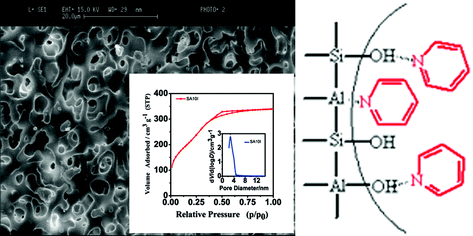Preparation and characterization of bimodal porous alumina–silica and its application to removal of basic nitrogen compounds from light oil†
Abstract

* Corresponding authors
a
School of Materials Science and Engineering, University of Science and Technology Beijing, 100083 Beijing, China
E-mail:
wujs76@163.com
Fax: +86-010-62334005
Tel: +86-010-62333975

 Please wait while we load your content...
Something went wrong. Try again?
Please wait while we load your content...
Something went wrong. Try again?
J. Wu, X. Li, W. Du, C. Dong and L. Li, J. Mater. Chem., 2007, 17, 2233 DOI: 10.1039/B612501H
To request permission to reproduce material from this article, please go to the Copyright Clearance Center request page.
If you are an author contributing to an RSC publication, you do not need to request permission provided correct acknowledgement is given.
If you are the author of this article, you do not need to request permission to reproduce figures and diagrams provided correct acknowledgement is given. If you want to reproduce the whole article in a third-party publication (excluding your thesis/dissertation for which permission is not required) please go to the Copyright Clearance Center request page.
Read more about how to correctly acknowledge RSC content.
 Fetching data from CrossRef.
Fetching data from CrossRef.
This may take some time to load.
Loading related content
